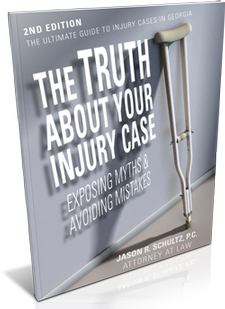Accident victims can even file a claim based on a condition called attractive nuisance. These are circumstances in which something dangerous is likely to attract children, posing a serious risk of harm. One example is a swimming pool that isn’t fenced in or doesn’t have a pool cover to prevent a child from accessing it.
Another situation in which property owners may be liable in a premises liability claim is when injuries occur as a result of unsafe landscaping. It is the property owner's responsibility to inspect and maintain trees, shrubs and other outdoor elements on the property. An example where this could lead to an accident is when a dead tree isn’t removed and it ends up falling onto someone.
Contact Jason R. Schultz at 404-474-0804 to set up a consultation to go over your case and get started pursuing legal action against a negligent property owner.


